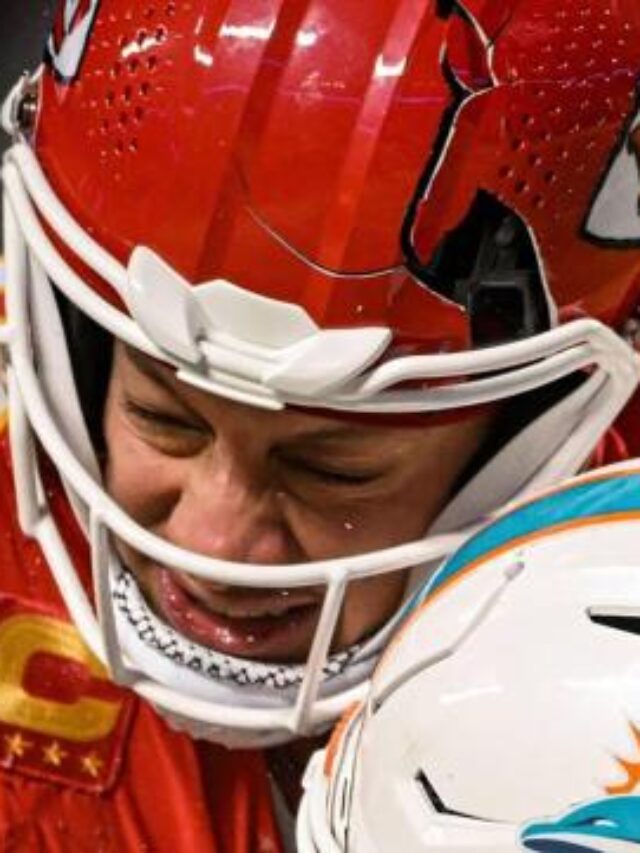Chilling Cracks: Mahomes’ Shattered Helmet in the Frigid Wild Card Game
On a bone-chilling Saturday night in January, amidst the heated battle between the Kansas City Chiefs and Miami Dolphins, American football witnessed a spectacle unlike any before. A collision on the field didn’t just leave fans breathless, it shattered a piece of history – Patrick Mahomes’ helmet.
With the mercury hovering at a teeth-chattering -4°F, making it the fourth coldest NFL game ever, the atmosphere crackled with a tension beyond just the score. Midway through the third quarter, the game saw a turning point. As Mahomes, the Chiefs’ star quarterback, scrambled away from Dolphins’ pressure, a hit by safety DeShon Elliott sent a shockwave through the stadium. The impact did more than just disrupt the play; it caused Mahomes’ helmet to crack, revealing a gaping hole near the crown.
Fortunately, Mahomes emerged unscathed. Officials stopped the play, scrutinized the damaged helmet, and deemed it unsafe for further use. Switching to a backup, Mahomes led the Chiefs to a decisive 31-13 victory, but the broken helmet resonated far beyond the final whistle.
This unprecedented event sparked a flurry of questions and concerns. Mahomes, still visibly surprised, remarked, “I’ve never seen a helmet do that before. I’m sure it was because of the cold. It was definitely a first for me.” Coach Andy Reid echoed the sentiment, stating, “We’re going to have to look into that. That’s not something we want to see happen again, but I’m glad Patrick’s okay.”
The shattered helmet wasn’t just a piece of broken equipment; it became a symbol of the potential dangers lurking in the extreme cold. Experts pointed out that frigid temperatures can make materials brittle, potentially compromising the integrity of helmets and other gear. This raised an unsettling question: are cold-weather games putting player safety at risk?
The NFL, naturally, took notice. The incident prompted an investigation into whether the existing helmet inspection and replacement protocols, already stringent, were followed in this case. Additionally, it ignited a broader discussion about the suitability of playing football in such harsh conditions. Some players voiced concerns, highlighting the increased risk of injuries in the biting cold.
While the long-term consequences of this incident remain to be seen, it undeniably served as a wake-up call. The NFL can’t afford to ignore the concerns about player safety, especially when environmental factors like extreme cold introduce potentially hazardous complications. It’s likely that we’ll see a review of protocols, equipment testing, and potentially even adjustments to scheduling for cold-weather games.
Beyond the practicalities, the shattered helmet stands as a stark reminder of the human element amidst the high-octane world of professional sports. It’s a poignant symbol of the vulnerability every player faces, even the seemingly invincible Mahomes. It’s a call to prioritize player safety above all else, ensuring that on the frozen tundra of the gridiron, the roar of the crowd isn’t overshadowed by the chilling crack of broken equipment.
The NFL, players, and fans alike have a responsibility to learn from this event. By prioritizing safety, adapting to changing conditions, and fostering open communication, we can ensure that the game we love continues to thrive, without compromising the well-being of those who make it all possible. The shattered helmet may have been a chilling sight, but hopefully, it will serve as a catalyst for positive change, reminding us that beneath the pads and helmets, there are human beings whose safety deserves our utmost attention.
Watch Story : Click Here
